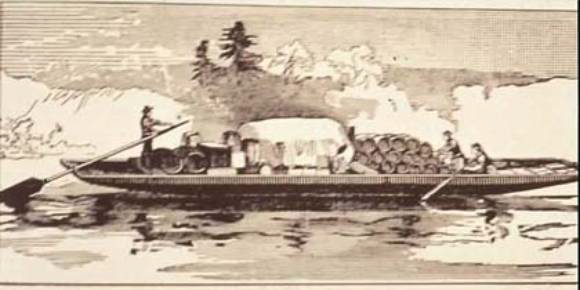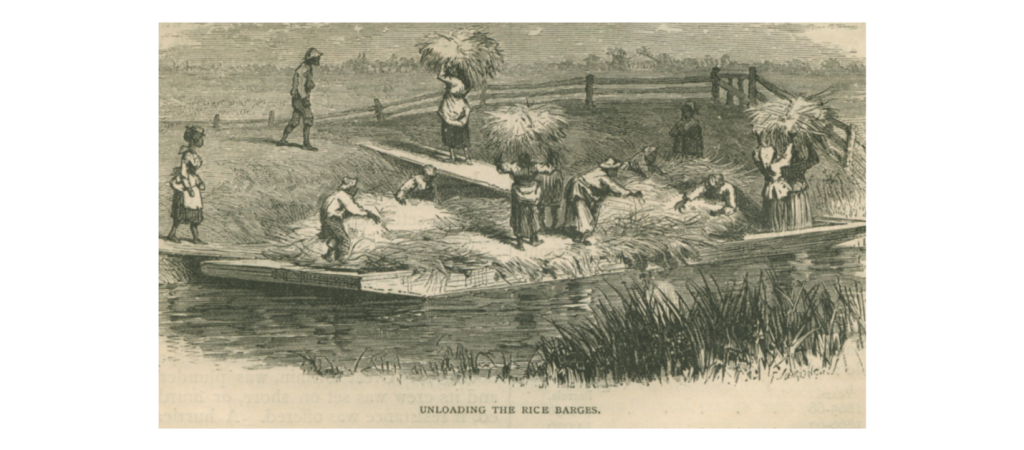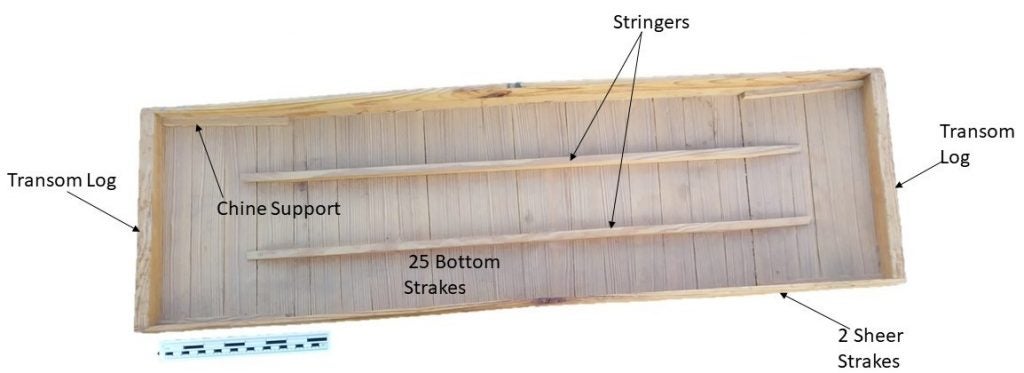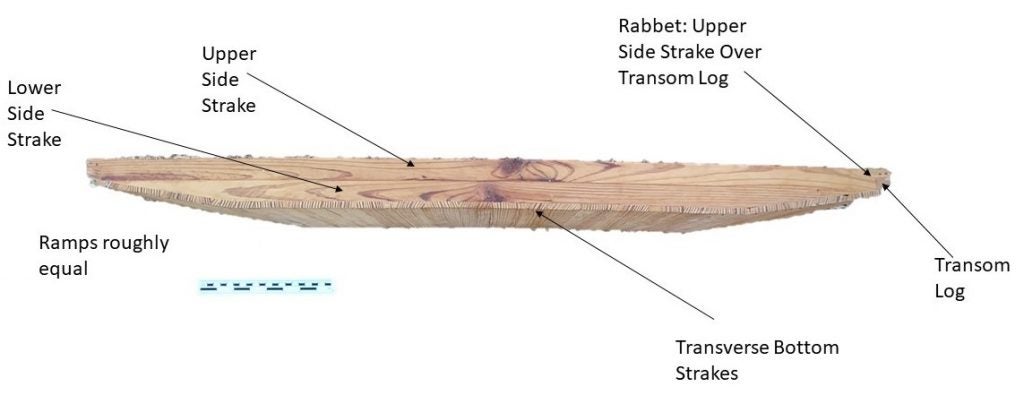Rice Flats
By Christopher Jackson
The South Carolina Rice Barge or Antebellum Plantation Rice Flat was used as the primary hauling vehicle of the South Carolina Lowcountry. The rectilinear shape and flat bottom gave it both tremendous initial stability and a very high cargo-carrying capacity while retaining an extremely shallow draft.[1] With the rise of the Carolina rice-plantation economy between 1690-1710, these flats proved invaluable for hauling not only the rice crop, but anything that needed to be carried such as workers, lumber, and goods going out for export or coming into South Carolina. There is some dispute on whether these craft are descended from English or African traditions as similar vessels are known both throughout Europe and West Africa. Even the introduction and mastering of rice as a cash crop in South Carolina is in dispute, whether the Africans brought the knowledge exploited by the English, or if colonists’ experimentation was the primary form of development, augmented only later by African familiarity with rice. To whatever extent, the development of Carolina rice-growing was in its first few decades a “collaborative effort” that quickly shifted into the strict slave-based society that left the enslaved “invisible.” [2] These vessels, whether one prefers to refer to them as barges or flats, were the carriers of the South Carolina commodities, and aided in the building of an economy unique among the colonies and Antebellum United States.
[1] Edward C. Fennel, “Barge May Hold Key To S.C. History,” Associated Press via Greensboro News & Record, 29 Oct. 1992, updated 26 Jan. 2015. https://greensboro.com/barge-may-hold-key-to-s-c-history/article_d952949c-0ec2-51f4-87f4-2e0068101f05.html
[2] John H. Tibbetts, “Carolina’s Gold Coast: The Culture of Rice and Slavery,” Coastal Heritage, 28(1) 2014. https://www.scseagrant.org/carolinas-gold-coast-the-culture-of-rice-and-slavery/


Model
This is a rectilinear, functionally symmetrical double-ended barge (possibly a South Carolina Rice Barge) built of an unknown species of yellow pine. It is approximately 92cm long with a consistent beam of 27cm. The draft and displacement are unknown, but the vessel has a freeboard of 6.4cm from the flat bottom to the sheer. There are roughly equal ramps at each end 16cm long that rise 3.2cm from the 58cm flat section of the middle to the transom logs at each end. The transoms are both a single squared-off log that run the full beam of the vessel, 1.6cm wide and 1.6cm thick. There are rabbets at all four corners where the upper sheer strake of each side overlaps the transom logs in a trapezoid shaped like a right triangle with the point flattened off. The dimensions of the rabbets are 1.3 high on the midships-facing side, and 1cm high on the outside of the transoms. All rabbets are 1.6cm wide, the full width of each transom log. There are two strakes that form each side, and all strakes run the full length of the vessel and all strakes are approximately 2cm wide and 0.6cm thick. The 25 bottom strakes run the full width of the vessel and average 3.7cm wide and 0.7cm thick and stop 1.25cm from the ends, overlapping the transom logs. Inside the barge, there are 4 chine supports on the ramps, approximately 14.5cm long by 0.9cm wide and 0.7cm high. Each chine support runs from the transom log to just short of where the ramps transition into the central flat section. The central flat section is supported by two stringers 71.2cm long (crossing over into the ramp sections), 1cm wide and 1.1cm tall.

Plan View

Profile View